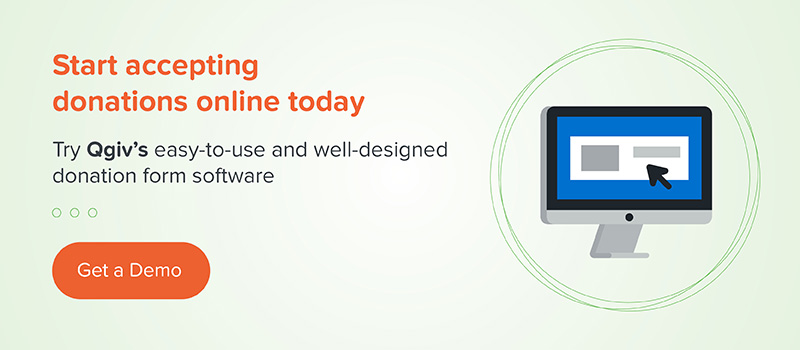We know that running a small nonprofit can be very different than running a large nonprofit. There are unique challenges to face, different work loads to handle, and countless choices to make. That’s why we put together a list of quick tips especially for small nonprofits. They can help you take advantage of your size and make the most of everything you do!
Make Sure You Have The Right Tools
Whether your organization has a whole team of employees or if you’re flying solo, time is valuable! Make sure your nonprofit has the tools it needs to get things done quickly and efficiently. If keeping Excel spreadsheets full of donor contact information or using hand-written expense ledgers works for you, that’s wonderful! If those solutions don’t work for you, there are services out there that can help you streamline your operations and make the most of every minute. E-mail services, client management systems, and programs that let you create and manage tasks are all available for free or nearly free. If your organization finds an amazing service that will change the way you do business, don’t overthink paying for a good product. Think carefully, assess the return you’ll get on your investment, and make sure you have the tools you need to do your job well. You’ll be thankful you did!
Qgiv tip: your Qgiv account can integrate with a number of different services that are popular in the nonprofit sector. Check in your dashboard to see what you can do!
Add Personal Touches
If you’re a small or brand-new nonprofit, you probably have a relatively small donor pool. Take advantage of its size by adding personal touches to thank-you notes, e-mail correspondence, and appeals. Try taking a few seconds to hand-sign a thank-you card, writing personal letters to major donors, or including allies and volunteers in your decision-making. Simple steps can help with donor retention and will help build strong emotional connections that will last even after you grow.
Qgiv tip: You can add your own personal touch by customizing the e-mail receipts your supporters receive immediately after they make a donation. You can also use your reports to keep track of how often donors give to your organization, which can help single out major donors and help you decide how to make sure they stay involved.
Be Smart About Your Board Members
Building a good board can make or break your organization. Put plenty of time and thought into selecting your board members, and try to focus on adding individuals who will advocate for your nonprofit and will put in plenty of time and effort to make your mission a success. It’s easy to fall into the trap of adding people to your board solely because of personal friendships, family ties, or political expediency. You can involve people in your organization in tons of different ways, but save the spots on the board for people who will work hard and use their connections to make your organization flourish. That being said….
Purposefully Cultivate Relationships
Building real relationships extends beyond building a donor base. That’s important too, obviously, but is only one of the many reasons that networking is so valuable. Establishing connections with influential people in your community can result in some valuable allies, and befriending local vendors and businesses can also be beneficial. Remember that donors don’t necessarily have to donate money! Vendors who are enthusiastic about your cause may be willing to make in-kind donations for services or products instead of cash. Be sure your relationships with allies and vendors aren’t one-sided, though. Be sure you repay them by acknowledging their involvement in a way that benefits them, too!
Organize Your Nonprofit Membership Program
No matter what size organization you have, retaining donors is essential to your nonprofit’s success. Implementing a membership program is an effective way to improve your stewardship strategy.
Essentially, a membership program gives supporters perks in exchange for contributions in the form of membership fees. You can build a program that fits your nonprofit and offers incentives your donors will want. Programs usually have a goal or initiative—like raising money or building a community of advocates—that provides donors with more opportunities to stay engaged.
If you want to create a membership program, you should consider who will head the program, how much your membership will cost, and what type of benefits donors will receive when they join.
Build Your Case
If you’re going to recruit allies, find donors, and build professional relationships, you’ll have to be able to explain why your organization deserves support. More importantly, you’ll have to be able to do so in a clear, concise, compelling way. Nailing down your story and a powerful case for your mission is helpful in other areas, too, including in newsletters and original web content. A good story and a strong case for support will quickly become part of your nonprofit’s brand, which will help you…
Create and Maintain Your Brand
Your small nonprofit can make a big impression if you create strong branding. Your brand is more than your logo; your brand, simply, is what people think of when they hear your nonprofit’s name. Your employees, your social media posts, your e-mail appeals… all of it is tied to your brand. Having a nice logo and an appealing website are awesome, but take a few minutes to really think about what you want to convey about your nonprofit. Do you want to focus on your transparency and accountability? What do you want to emphasize about your nonprofit’s mission? If you want donors to remember one thing about you, what do you want them to remember? Take your answer and incorporate it into everything you do. Ideally, your brand will make you stand out and stick in people’s memories.
Qgiv tip: Your brand is important and should be part of everything you do. That includes your donation page! If you update your branding, let us know. We’ll work with you to update your donation page to fit the image you’re working to convey to donors.
Choose Your Battles
Employees at small nonprofits usually have to fill lots of different roles within the organization. You can help prevent burnout by being selective about the projects you decide to take on. If you’re already stretched thin by taking care of your nonprofit’s social media posts, don’t try to take on generating Pinterest material. If you’re already overworked while planning a walk-a-thon, don’t try to do a gala event around the same time. You get the idea. Keep an eye on your employees and prioritize your projects to avoid overworking them. Taking care of them is critical — they’re the people who keep your organization running.
Keep It Organized
Keep other parts of your operations simple, too. It’s easy to overlook internal practices when you’re building a nonprofit from the ground up, but it’s important! Disorganization and complicated procedures can be confusing and will end up causing frustration and wasted time. Work on things like maintaining a straightforward filing system and make sure that all employees know how to use all your different fundraising and administrative tools. Consolidating donor information, keeping thorough reports, and establishing easy-to-follow guidelines will help keep everyone in your office working as efficiently as possible. When you have these practices in place when you’re small, it’ll be easy to keep up with them once you’ve grown!
Qgiv tip: Make sure your employees are all on the same page with your fundraising platform. We can schedule a training session with your employees so they’ll know how to get the most from Qgiv.
Learn and Adapt
Being small can be an advantage. If you notice that a particular fundraising method doesn’t work, that one of your events is unprofitable, or that one of your in-house policies is problematic, it’s easy to make a quick change. Larger organizations with lots of employees generally take longer to adapt to changes, but small nonprofits can usually switch directions more quickly. Don’t be afraid to experiment! Finalizing your organization’s best practices and policies now, before you grow into a larger company with more employees, will help ensure smooth sailing in the future.
Qgiv tip: Use your reporting tools to keep track of what events are popular with your donors, what fundraising channels are most successful, and what type of people tend to support your organization. That information can help you figure out where to direct your energy and resources to get the best results.
Take A Step Back
Don’t get too comfortable once you’ve got your best practices and protocols laid out. Periodically, take a step back and take an unbiased look at your organization. What’s working? What isn’t? What gets donors excited? Are you meeting your goals? Should you have different ones? Is your technology outdated? Are your donors happy? What about your employees? Remember, your size makes you nimble, so to speak, and able to adapt to the ever-changing landscape of the nonprofit sector. Use that to your advantage!
Running a small nonprofit is full of unique challenges. Using your size to your advantage can set you up for success, and we hope these tips can help!
Check out the different types of nonprofit donations for organizations big and small!








